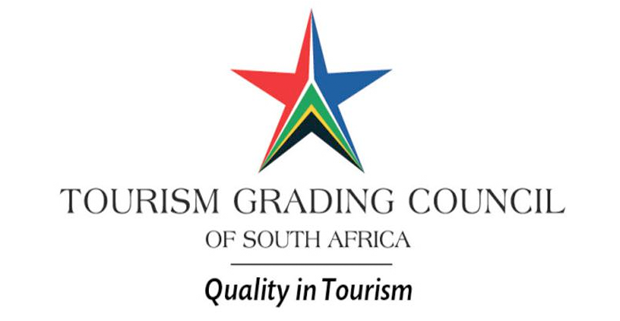







































































.jpg)
Ramses Hilton Hotel
Enjoy our river-facing heated outdoor pool, onsite casino, shopping Galleria, and a variety of dining venues.Enjoy our river-facing heated outdoor pool, onsite casino, shopping Galleria, and a variety of dining venues.
Accommodation
King Guest Room with City View
Description
36 sq. m./387 sq. ft., City view, private balcony, 32-inch TV, work desk, mini bar, seating area Enjoy your stay in this stylish room with one king bed. Stay connected with standard WiFi or unwind and watch the 49-inch IPTV. This room features: Private balcony with views over the historic center of Cairo 49-inch IPTV with international channels Hilton's Serenity bed for a memorable sleep Exclusive bathroom amenities Kids amenities: coloring, drawing books, selection of toys, kids toothbrush, shampoo and kids toilet ring Book direct on Hilton.com and get complimentary standard WiFi. Premium WiFi has a special fee Sleeps 2 adults and an additional guest on a rollaway bed.
Twin Deluxe Room with Nile View
King Guest Room with Nile View
Description
36 sq. m./387 sq. ft., River Nile view, private balcony, work desk, mini bar, seating area Enjoy the breathtaking view of the River Nile from this stylish room with one king bed. Stay connected with standard WiFi or unwind and watch the 49-inch IPTV. This room features: Private balcony with view of the Scenic River Nile 49-inch IPTV with international channels Hilton's Serenity bed for a memorable sleep Exclusive bathroom amenities Kids amenities: coloring, drawing books, selection of toys, kids toothbrush, shampoo and kids toilet ring Book direct on Hilton.com and get complimentary standard WiFi. Premium WiFi has a special fee Sleeps 2 adults and an additional guest on a rollaway bed.
King Corner Room with Nile View
Description
44 sq. m/474 sq. ft., corner room, River Nile view, private balcony, work desk, mini bar, seating area Enjoy your stay in this corner room featuring a king-sized bed. Stay connected with standard WiFi or unwind and watch the 49-inch IPTV and a range of convenient amenities. This room features: Private balcony with view of the Scenic River Nile 49-inch IPTV with international channels Possibility to book as an interconnecting room Seating area Hilton's Serenity bed for a memorable sleep Kids Amenities: Coloring, drawing books, selection of toys, kids toothbrush, shampoo and kids toilet ring Book direct on Hilton.com and get complimentary standard WiFi. Premium WiFi has a special fee Sleeps 2 adults and an additional guest on a rollaway bed or sofa bed.
Family Connecting King Room with City View
Description
80 sq. m/861 sq. ft., corner room, City view, Private balcony, work desk, mini bar, seating area, space that is tailor made for your family. Stay connected with your family with our guaranteed interconnecting rooms designed for your convenience. Allowing you to extend from one room to another, feel at home in our Family Guest Room with one king bed adding one additional guestrooms with two twin beds, in addition to a comfortable seating area and a private balcony. An optional extra bed or baby cot is available upon request Keep your kids entertained with 6 TV kids channels. The safety and comfort of your family is our priority that's why we offer child proof electric plugs, small pillows for toddlers, baby high chairs, board games and toys. Children can enjoy their favourite meals as well as healthy bites with special cutlery and color-in placemats. Spend quality time in our indoor and outdoor kids area. This room features: Private balcony with views over the historic center of Cairo 49-inch IPTV with international channels Hilton's Serenity bed for a memorable sleep Exclusive bathroom amenities For Family Comforts and Convenience Babysitting Service Baby cot Indoor and outdoor Kids Area Children Activities Children Menu Babies High Chairs Children Welcome Amenities 6 TV kids channels Kids amenities: coloring, drawing books, selection of toys, kids toothbrush, shampoo and kids toilet ring Book direct on Hilton.com and get complimentary standard WiFi.
Family Connecting King Room with Nile View
Description
80 sq. m/861 sq. ft., corner room, River Nile view, Private balcony, work desk, mini bar, seating area, space that is tailor made for your family. Stay connected with your family with our guaranteed interconnecting rooms designed for your convenience. Allowing you to extend from one room to another, feel at home in our Family Guest Room with one king bed adding one additional guestrooms with two twin beds, in addition to a comfortable seating area and a private balcony. An optional extra bed or baby cot is available upon request Keep your kids entertained with 6 TV kids channels. The safety and comfort of your family is our priority that's why we offer child proof electric plugs, small pillows for toddlers, baby high chairs, board games and toys. Children can enjoy their favourite meals as well as healthy bites with special cutlery and color-in placemats. Spend quality time in our indoor and outdoor kids area. This room features: Private balcony with view of the Scenic River Nile 49-inch IPTV with international channels Hilton's Serenity bed for a memorable sleep Exclusive bathroom amenities For Family Comforts and Convenience Babysitting Service Baby cot Indoor and outdoor Kids Area Children Activities Children Menu Babies High Chairs Children Welcome Amenities 6 TV kids channels Kids amenities: coloring, drawing books, selection of toys, kids toothbrush, shampoo and kids toilet ring Book direct on Hilton.com and get complimentary standard WiFi.
King Corner Room with City View
Description
44 sq. m/474 sq. ft, corner room, City view, private balcony, work desk, mini bar, seating area Enjoy your stay in this corner room featuring a king-sized bed,. Stay connected with standard WiFi or unwind and watch the 49-inch IPTV and a range of convenient amenities This room features: Private balcony with view of the majestic city of Cairo 49-inch IPTV with international channels Possibility to book as an interconnecting room Seating area Hilton's Serenity bed for a memorable sleep Kids amenities: coloring, drawing books, selection of toys, kids toothbrush, shampoo and kids toilet ring Book direct on Hilton.com and get complimentary standard WiFi. Premium WiFi has a special fee Sleeps 2 adults and an additional guest on a rollaway bed or sofa bed.
King Deluxe Room with City View
Description
36 sq. m/387 sq. ft., City view, private balcony, work desk, mini bar, seating area Enjoy your stay in this Deluxe room featuring a king-sized bed,. Stay connected with standard WiFi or unwind and watch the 49-inch IPTV and a range of convenient amenities. This room features: Private balcony with views over the historic center of Cairo 49-inch IPTV with international channels Hilton's Serenity bed for a memorable sleep Exclusive bathroom amenities Kids amenities: coloring, drawing books, selection of toys, kids toothbrush, shampoo and kids toilet ring Book direct on Hilton.com and get complimentary standard WiFi. Premium WiFi has a special fee Sleeps 2 adults and an additional guest on a rollaway bed or sofa bed.
King Deluxe Room with Nile View
Description
36 sq. m/387 sq. ft., River Nile view, private balcony, work desk, mini bar, seating area Enjoy your stay in this Deluxe room featuring a king-sized bed,. Stay connected with standard WiFi or unwind and watch the 49-inch IPTV and a range of convenient amenities. This room features: Private balcony with view of the Scenic River Nile 49-inch IPTV with international channels Hilton's Serenity bed for a memorable sleep Exclusive bathroom amenities Kids amenities: coloring, drawing books, selection of toys, kids toothbrush, shampoo and kids toilet ring Book direct on Hilton.com and get complimentary standard WiFi. Premium WiFi has a special fee Sleeps 2 adults and an additional guest on a rollaway bed or sofa bed.
Twin Guest Room with City View
Description
36 sq. m./387 sq. ft., City view, private balcony, work desk, mini bar, seating area. Enjoy the view of the historic center of Cairo from this stylish room with twin beds. Stay connected with standard WiFi or unwind and watch the 49-inch IPTV. This room features: Private balcony with views over the historic center of Cairo 49-inch IPTV with international channels Hilton's Serenity bed for a memorable sleep Exclusive bathroom amenities Kids amenities: coloring, drawing books, selection of toys, kids toothbrush, shampoo and kids toilet ring Book direct on Hilton.com and get complimentary standard WiFi. Premium WiFi has a special fee Sleeps 2 adults and an additional guest on a rollaway bed.
Twin Guest Room with Nile View
Description
36 sq. m./387 sq. ft., River Nile views, private balcony, work desk, mini bar, seating area. Enjoy the breathtaking view of the River Nile from this stylish room with twin beds, and a range of convenient amenities. This room features: Private balcony with view of the Scenic River Nile 49-inch IPTV with international channels Hilton's Serenity bed for a memorable sleep Exclusive bathroom amenities Kids amenities: coloring, drawing books, selection of toys, kids toothbrush, shampoo and kids toilet ring Book direct on Hilton.com and get complimentary standard WiFi. Premium WiFi has a special fee Sleeps 2 adults and an additional guest on a rollaway bed.
Family Connecting Twin Room with City View
Description
80 sq. m/861 sq. ft., corner room, City view, Private balcony, work desk, mini bar, seating area, space that is tailor made for your family. Stay connected with your family with our guaranteed interconnecting rooms designed for your convenience. Allowing you to extend from one room to another, feel at home in our Family Guest Room with one king bed adding one additional guestrooms with two twin beds, in addition to a comfortable seating area and a private balcony. An optional extra bed or baby cot is available upon request Keep your kids entertained with 6 TV kids channels. The safety and comfort of your family is our priority that's why we offer child proof electric plugs, small pillows for toddlers, baby high chairs, board games and toys. Children can enjoy their favourite meals as well as healthy bites with special cutlery and color-in placemats. Spend quality time in our indoor and outdoor kids area. This room features: Private balcony with views over the historic center of Cairo 49-inch IPTV with international channels Hilton's Serenity bed for a memorable sleep Exclusive bathroom amenities For Family Comforts and Convenience Babysitting Service Baby cot Indoor and outdoor Kids Area Children Activities Children Menu Babies High Chairs Children Welcome Amenities 6 TV kids channels Kids amenities: coloring, drawing books, selection of toys, kids toothbrush, shampoo and kids toilet ring Book direct on Hilton.com and get complimentary standard WiFi.
Family Connecting Twin Room with Nile View
Description
80 sq. m/861 sq. ft., corner room, River Nile view, Private balcony, work desk, mini bar, seating area, space that is tailor made for your family. Stay connected with your family with our guaranteed interconnecting rooms designed for your convenience. Allowing you to extend from one room to another, feel at home in our Family Guest Room with one king bed adding one additional guestrooms with two twin beds, in addition to a comfortable seating area and a private balcony. An optional extra bed or baby cot is available upon request Keep your kids entertained with 6 TV kids channels. The safety and comfort of your family is our priority that's why we offer child proof electric plugs, small pillows for toddlers, baby high chairs, board games and toys. Children can enjoy their favourite meals as well as healthy bites with special cutlery and color-in placemats. Spend quality time in our indoor and outdoor kids area. This room features: Private balcony with view of the Scenic River Nile 49-inch IPTV with international channels Hilton's Serenity bed for a memorable sleep Exclusive bathroom amenities For Family Comforts and Convenience Babysitting Service Baby cot Indoor and outdoor Kids Area Children Activities Children Menu Babies High Chairs Children Welcome Amenities 6 TV kids channels Kids amenities: coloring, drawing books, selection of toys, kids toothbrush, shampoo and kids toilet ring Book direct on Hilton.com and get complimentary standard WiFi.
Twin Corner Rooom with City View
Description
44 sq. m/474 sq. ft, corner room, City view, private balcony, work desk, mini bar, seating area Enjoy your stay in this corner room featuring twin beds. Stay connected with standard WiFi or unwind and watch the 49-inch IPTV and a range of convenient amenities This room features: Private balcony with view of the majestic city of Cairo 49-inch IPTV with international channels Possibility to book as an interconnecting room Seating area Hilton's Serenity bed for a memorable sleep Kids amenities: coloring, drawing books, selection of toys, kids toothbrush, shampoo and kids toilet ring Book direct on Hilton.com and get complimentary standard WiFi. Premium WiFi has a special fee Sleeps 2 adults and an additional guest on a rollaway bed or sofa bed.
Twin Deluxe Room with City View
Description
36 sq. m/387 sq. ft., City view, private balcony, work desk, mini bar, seating area Enjoy your stay in this Deluxe room featuring twin beds. Stay connected with standard WiFi or unwind and watch the 49-inch IPTV and a range of convenient amenities. This room features: Private balcony with views over the historic center of Cairo 49-inch IPTV with international channels Hilton's Serenity bed for a memorable sleep Exclusive bathroom amenities Kids amenities: coloring, drawing books, selection of toys, kids toothbrush, shampoo and kids toilet ring Book direct on Hilton.com and get complimentary standard WiFi. Premium WiFi has a special fee Sleeps 2 adults and an additional guest on a rollaway bed or sofa bed.
Twin Deluxe Room with Nile View
Description
36 sq. m/387 sq. ft., River Nile view, private balcony, work desk, mini bar, seating area Enjoy your stay in this Deluxe room featuring twin beds. Stay connected with standard WiFi or unwind and watch the 49-inch IPTV and a range of convenient amenities. This room features: Private balcony with view of the Scenic River Nile 49-inch IPTV with international channels Hilton's Serenity bed for a memorable sleep Exclusive bathroom amenities Kids amenities: coloring, drawing books, selection of toys, kids toothbrush, shampoo and kids toilet ring Book direct on Hilton.com and get complimentary standard WiFi. Premium WiFi has a special fee Sleeps 2 adults and an additional guest on a rollaway bed or sofa bed.
All Amenities
Accessible Amenities
Available accessible features include:
Dining
Breezes Lounge & Grill
Breezes Lounge & Grill is the ideal poolside spot to enjoy the breeze from the River Nile. This casual yet trendy restaurant presents its grilled items sizzling hot on charcoal table top grills and its authentic Shish Kebab on hanging skewers. Enjoy breath-taking views of the River Nile while sipping on a signature cocktail.
Citadel Grill
Explore the culinary delights of the Mediterranean Citadel Grill offers delicious traditional Mediterranean specialities freshly prepared before your eyes.
Garden Court Cafe
Guests flock to the busy sunlit Garden Court Café at Ramses Hilton. Unwind in the comfortable chairs and enjoy oriental and international light meals, or listen to the live pianist over a cocktail or specialty coffee.
Namaste Indian Restaurant
Indian artwork, natural wood floors and atmospheric lighting complement the authentic and exotic dining experience at Namaste Restaurant. From the show-cooking area, you can watch our skilled Indian Chefs delicately preparing Tandoori and fresh Naan bread in the traditional 'Tandoor' oven. A tempting selection of contemporary Indian and vegetarian dishes are on offer.
For the fourth consecutive year, Namaste has won 'Best Indian Cuisine' 2017 by cairo360.com, one of Cairo's leading online guides. The award is based on customer reviews, taking into consideration value for money, quality of service and product.
We are thrilled to announce that Namaste Indian Restaurant delivery and pick up services are now available.
Opia Lounge and Bar
OPIA is not merely a word but it is an emotion. It is the ambiguous intensity of looking someone in the eye which can simultaneously feel invasive and vulnerable. Following this emotion we have created a menu that allows you to enjoy the spectacular views and intensify your conversation whilst enjoying our new menu that has been developed by our highly experienced Opia culinary team. Combining the best ingredients with the newest techniques we aim to bring to you a sensation of textures and flavours perfectly capturing the Opia emotion. Bringing all this together for you to your table.
Sherlock Holmes Pub
Catch the latest international sport while you eat and drink with friends. Come and celebrate the famous detective in this friendly pub named after the great man himself. Watch your favourite sports on widescreen TVs and enjoy the food and drink on offer on the Great Sherlock Holmes Food Adventure Menu.
Terrace Cafe
Start your day with coffee and fresh juices or dine watching the sun set over the Nile. Try the all-day Oriental corner, Egyptian specialties, or themed international evening buffets at this light and welcoming Cairo restaurant.
Cairo
Cairo is the capital of Egypt and the largest city in the Arab world. The Greater Cairo metropolitan area, with a population of 21.3 million, is the largest urban agglomeration in Africa, the largest in the Arab world and the Middle East, and the sixth-largest in the world by population. Cairo is associated with ancient Egypt, as the Giza pyramid complex and the ancient cities of Memphis and Heliopolis are located in its geographical area. Located near the Nile Delta, the city first developed as Fustat, a settlement founded after the Muslim conquest of Egypt in 640 next to an existing ancient fortress. Under the Fatimid dynasty a new city, al-Qāhirah, was founded nearby in 969. It later superseded Fustat as the main urban centre during the Ayyubid and Mamluk periods (12th–16th centuries). Cairo has long been a centre of the region's political and cultural life, and is titled "the city of a thousand minarets" for its preponderance of Islamic architecture. Cairo's historic center was awarded World Heritage Site-status in 1979. Cairo is considered a World City with a "Beta +" classification according to GaWC.
Today, Cairo has the oldest and largest cinema and music industry in the Arab World, as well as the world's second-oldest institution of higher learning, Al-Azhar University. Many international media, businesses, and organizations have regional headquarters in the city; the Arab League has had its headquarters in Cairo for most of its existence.
With a population of over 10 million spread over 453 km2 (175 sq mi), Cairo is by far the largest city in Egypt. An additional 9.5 million inhabitants live in close proximity to the city. Cairo, like many other megacities, suffers from high levels of pollution and traffic. The Cairo Metro is one of only two metro systems in Africa (the other being in Algiers, Algeria), and ranks amongst the fifteen busiest in the world, with over 1 billion annual passenger rides. The economy of Cairo was ranked first in the Middle East in 2005, and 43rd globally on Foreign Policy's 2010 Global Cities Index.
Etymology
Egyptians often refer to Cairo as Maṣr (IPA: [mɑsˤɾ]; مَصر), the Egyptian Arabic name for Egypt itself, emphasizing the city's importance for the country. Its official name al-Qāhirah (القاهرة) means 'the Vanquisher' or 'the Conqueror, supposedly due to the fact that the planet Mars, an-Najm al-Qāhir (النجم القاهر, 'the Conquering Star'), was rising at the time when the city was founded, possibly also in reference to the much awaited arrival of the Fatimid Caliph Al-Mu'izz who reached Cairo in 973 from Mahdia, the old Fatimid capital.[25] The location of the ancient city of Heliopolis is the suburb of Ain Shams (Arabic: عين شمس, 'Eye of the Sun').
There are a few Coptic names of the city. Ti•kash•roomi (Coptic: Ϯⲕⲁϣⲣⲱⲙⲓ Late Coptic: [di.kɑʃˈɾoːmi]) is attested as early as 1211 and is a calque which means 'man breaker'(Ϯ-, 'the' + (ⲕⲁϣ-, 'to break' + ⲣⲱⲙⲓ, 'man') which is akin to Arabic al-Qāhirah . Lioui (Ⲗⲓⲟⲩⲓ Late Coptic: [lɪˈjuːj]) or Elioui (Ⲉⲗⲓⲟⲩⲓ Late Coptic: [ælˈjuːj]) is another name which is descended from the Greek name of Heliopolis (Ήλιούπολις).[27] Some argue that Mistram (Ⲙⲓⲥⲧⲣⲁⲙ Late Coptic: [ˈmɪs.təɾɑm]) or Nistram (Ⲛⲓⲥⲧⲣⲁⲙ Late Coptic: [ˈnɪs.təɾɑm]) is another Coptic name for Cairo, although others think that it's rather a name of an Abbasid capital Al-Askar. Ⲕⲁϩⲓⲣⲏ (Kahi•ree) is a popular modern rendering of an Arabic name (others being Ⲕⲁⲓⲣⲟⲛ [Kairon] and Ⲕⲁϩⲓⲣⲁ [Kahira]) which is modern folk etymology meaning 'land of sun'. Some argue that it was a name of an Egyptian settlement upon which Cairo was built, but it's rather doubtful as this name is not attested in any Hieroglyphic or Demotic source, although some researchers, like Paul Casanova, view it as a legitimate theory. Cairo is also referred to as Ⲭⲏⲙⲓ (Late Coptic: [ˈkɪ.mi]) or Ⲅⲩⲡⲧⲟⲥ (Late Coptic: [ˈɡɪp.dos]), which means Egypt in Coptic, the same way it's referred to in Egyptian Arabic.
Sometimes the city is informally referred to as Cairo by people from Alexandria (IPA: [ˈkæjɾo]; Egyptian Arabic: كايرو).
History
Ancient Settlements
The area around present-day Cairo had long been a focal point of Ancient Egypt due to its strategic location at the junction of the Nile Valley and the Nile Delta regions (roughly Upper Egypt and Lower Egypt), which also placed it at the crossing of major routes between North Africa and the Levant. Memphis, the capital of Egypt during the Old Kingdom and a major city up until Ptolemaic period, was located a short distance south of present-day Cairo. Heliopolis, another important city and major religious center, was located in what are now the northeastern suburbs of Cairo. It was largely destroyed by the Persian invasions in 525 BC and 343 BC and partly abandoned by the late first century BC.
However, the origins of modern Cairo are generally traced back to a series of settlements in the first millennium AD. Around the turn of the fourth century,[33] as Memphis was continuing to decline in importance, the Romans established a large fortress along the east bank of the Nile. The fortress, called Babylon, was built by the Roman emperor Diocletian (r. 285–305) at the entrance of a canal connecting the Nile to the Red Sea that was created earlier by emperor Trajan (r. 98–115). Further north of the fortress, near the present-day district of al-Azbakiya, was a port and fortified outpost known as Tendunyas or Umm Dunayn. While no structures older than the 7th century have been preserved in the area aside from the Roman fortifications, historical evidence suggests that a sizeable city existed. The city was important enough that its bishop, Cyrus, participated in the Second Council of Ephesus in 449. However, the Byzantine-Sassanian War between 602 and 628 caused great hardship and likely caused much of the urban population to leave for the countryside, leaving the settlement partly deserted. The site today remains at the nucleus of the Coptic Orthodox community, which separated from the Roman and Byzantine churches in the late 4th century. Cairo's oldest extant churches, such as the Church of Saint Barbara and the Church of Saints Sergius and Bacchus (from the late 7th or early 8th century), are located inside the fortress walls in what is now known as Old Cairo or Coptic Cairo.
Fustat and other early Islamic settlements
The Muslim conquest of Byzantine Egypt was led by Amr ibn al-As from 639 to 642. Babylon Fortress was besieged in September 640 and fell in April 641. In 641 or early 642, after the surrender of Alexandria (the Egyptian capital at the time), he founded a new settlement next to the Babylon Fortress. The city, known as Fustat (Arabic: الفسطاط, romanized: al-Fusṭāṭ, lit. 'the tent'), served as a garrison town and as the new administrative capital of Egypt. Historians such as Janet Abu-Lughod and André Raymond trace the genesis of present-day Cairo to the foundation of Fustat. The choice of founding a new settlement at this inland location, instead of using the existing capital of Alexandria on the Mediterranean coast, may have been due to the new conquerors' strategic priorities. One of the first projects of the new Muslim administration was to clear and re-open Trajan's ancient canal in order to ship grain more directly from Egypt to Medina, the capital of the caliphate in Arabia. Ibn al-As also founded a mosque for the city at the same time, now known as the Mosque of Amr Ibn al-As, the oldest mosque in Egypt and Africa (although the current structure dates from later expansions).
In 750, following the overthrow of the Umayyad caliphate by the Abbasids, the new rulers created their own settlement to the northeast of Fustat which became the new provincial capital. This was known as al-Askar (Arabic: العسكر, lit. 'the camp') as it was laid out like a military camp. A governor's residence and a new mosque were also added, with the latter completed in 786. In 861, on the orders of the Abbasid caliph al-Mutawakkil, a Nilometer was built on Roda Island near Fustat. Although it was repaired and given a new roof in later centuries, its basic structure is still preserved today, making it the oldest preserved Islamic-era structure in Cairo today.
In 868 a commander of Turkic origin named Bakbak was sent to Egypt by the Abbasid caliph al-Mu'taz to restore order after a rebellion in the country. He was accompanied by his stepson, Ahmad ibn Tulun, who became effective governor of Egypt. Over time, Ibn Tulun gained an army and accumulated influence and wealth, allowing him to become the de facto independent ruler of both Egypt and Syria by 878. In 870, he used his growing wealth to found a new administrative capital, al-Qata'i (Arabic: القطائـع, lit. 'the allotments'), to the northeast of Fustat and of al-Askar. The new city included a palace known as the Dar al-Imara, a parade ground known as al-Maydan, a bimaristan (hospital), and an aqueduct to supply water. Between 876 and 879 Ibn Tulun built a great mosque, now known as the Mosque of Ibn Tulun, at the center of the city, next to the palace. After his death in 884, Ibn Tulun was succeeded by his son and his descendants who continued a short-lived dynasty, the Tulunids. In 905, the Abbasids sent general Muhammad Sulayman al-Katib to re-assert direct control over the country. Tulunid rule was ended and al-Qatta'i was razed to the ground, except for the mosque which remains standing today.
Foundation and Expansion of Cairo
During the Fatimid period Fustat reached its apogee in size and prosperity, acting as a center of craftsmanship and international trade and as the area's main port on the Nile. However, in 1168 the Fatimid vizier Shawar set fire to unfortified Fustat to prevent its potential capture by Amalric, the Crusader king of Jerusalem. While the fire did not destroy the city and it continued to exist afterward, it did mark the beginning of its decline. Over the following centuries it was Cairo, the former palace-city, that became the new economic center and attracted migration from Fustat.
While the Crusaders did not capture the city in 1168, a continuing power struggle between Shawar, King Amalric, and the Zengid general Shirkuh led to the downfall of the Fatimid establishment. In 1169, Shirkuh's nephew Saladin was appointed as the new vizier of Egypt by the Fatimids and two years later he seized power from the family of the last Fatimid caliph, al-'Āḍid. As the first Sultan of Egypt, Saladin established the Ayyubid dynasty, based in Cairo, and aligned Egypt with the Sunni Abbasids, who were based in Baghdad. In 1176, Saladin began construction on the Cairo Citadel, which was to serve as the seat of the Egyptian government until the mid-19th century. The construction of the Citadel definitively ended Fatimid-built Cairo's status as an exclusive palace-city and opened it up to common Egyptians and to foreign merchants, spurring its commercial development. Along with the Citadel, Saladin also began the construction of a new 20-kilometre-long wall that would protect both Cairo and Fustat on their eastern side and connect them with the new Citadel. These construction projects continued beyond Saladin's lifetime and were completed under his Ayyubid successors.
Apogee and decline under the Mamluks
In 1250, during the Seventh Crusade, the Ayyubid dynasty suffered a crisis with the death of al-Salih and power transitioned instead to the Mamluks, partly with the help of al-Salih's wife, Shajar ad-Durr, who ruled for a brief period around this time. Mamluks were soldiers who were purchased as young slaves and raised to serve in the sultan's army. Between 1250 and 1517 the throne of the Mamluk Sultanate passed from one mamluk to another in a system of succession that was generally non-hereditary, but also frequently violent and chaotic. The Mamluk Empire nonetheless became a major power in the region and was responsible for repelling the advance of the Mongols (most famously at the Battle of Ain Jalut in 1260) and for eliminating the last Crusader states in the Levant.
Despite their military character, the Mamluks were also prolific builders and left a rich architectural legacy throughout Cairo. Continuing a practice started by the Ayyubids, much of the land occupied by former Fatimid palaces was sold and replaced by newer buildings, becoming a prestigious site for the construction of Mamluk religious and funerary complexes.[79] Construction projects initiated by the Mamluks pushed the city outward while also bringing new infrastructure to the centre of the city.[80] Meanwhile, Cairo flourished as a centre of Islamic scholarship and a crossroads on the spice trade route among the civilisations in Afro-Eurasia. Under the reign of the Mamluk sultan al-Nasir Muhammad (1293–1341, with interregnums), Cairo reached its apogee in terms of population and wealth. By 1340, Cairo had a population of close to half a million, making it the largest city west of China.
When the traveller Ibn Battuta first came to Cairo in 1326, he described it as the principal district of Egypt. When he passed through the area again on his return journey in 1348 the Black Death was ravaging most major cities. He cited reports of thousands of deaths per day in Cairo. Although Cairo avoided Europe's stagnation during the Late Middle Ages, it could not escape the Black Death, which struck the city more than fifty times between 1348 and 1517. During its initial, and most deadly waves, approximately 200,000 people were killed by the plague, and, by the 15th century, Cairo's population had been reduced to between 150,000 and 300,000. The population decline was accompanied by a period of political stability between 1348 and 1412. It was nonetheless in this period that the largest Mamluk-era religious monument, the Madrasa-Mosque of Sultan Hasan, was built. In the late 14th century the Burji Mamluks replaced the Bahri Mamluks as rulers of the Mamluk state, but the Mamluk system continued to decline.
Though the plagues returned frequently throughout the 15th century, Cairo remained a major metropolis and its population recovered in part through rural migration. More conscious efforts were conducted by rulers and city officials to redress the city's infrastructure and cleanliness. Its economy and politics also became more deeply connected with the wider Mediterranean. Some Mamluk sultans in this period, such as Barbsay (r. 1422–1438) and Qaytbay (r. 1468–1496), had relatively long and successful reigns. After al-Nasir Muhammad, Qaytbay was one of the most prolific patrons of art and architecture of the Mamluk era. He built or restored numerous monuments in Cairo, in addition to commissioning projects beyond Egypt. The crisis of Mamluk power and of Cairo's economic role deepened after Qaytbay. The city's status was diminished after Vasco da Gama discovered a sea route around the Cape of Good Hope between 1497 and 1499, thereby allowing spice traders to avoid Cairo.
Ottoman Rule
Cairo's political influence diminished significantly after the Ottomans defeated Sultan al-Ghuri in the Battle of Marj Dabiq in 1516 and conquered Egypt in 1517. Ruling from Constantinople, Sultan Selim I relegated Egypt to a province, with Cairo as its capital. For this reason, the history of Cairo during Ottoman times is often described as inconsequential, especially in comparison to other time periods. However, during the 16th and 17th centuries, Cairo remained an important economic and cultural centre. Although no longer on the spice route, the city facilitated the transportation of Yemeni coffee and Indian textiles, primarily to Anatolia, North Africa, and the Balkans. Cairene merchants were instrumental in bringing goods to the barren Hejaz, especially during the annual hajj to Mecca. It was during this same period that al-Azhar University reached the predominance among Islamic schools that it continues to hold today; pilgrims on their way to hajj often attested to the superiority of the institution, which had become associated with Egypt's body of Islamic scholars. By the 16th century, Cairo also had high-rise apartment buildings where the two lower floors were for commercial and storage purposes and the multiple stories above them were rented out to tenants.
Under the Ottomans, Cairo expanded south and west from its nucleus around the Citadel. The city was the second-largest in the empire, behind Constantinople, and, although migration was not the primary source of Cairo's growth, twenty percent of its population at the end of the 18th century consisted of religious minorities and foreigners from around the Mediterranean.[103] Still, when Napoleon arrived in Cairo in 1798, the city's population was less than 300,000, forty percent lower than it was at the height of Mamluk—and Cairene—influence in the mid-14th century.
The French occupation was short-lived as British and Ottoman forces, including a sizeable Albanian contingent, recaptured the country in 1801. Cairo itself was besieged by a British and Ottoman force culminating with the French surrender on 22 June 1801. The British vacated Egypt two years later, leaving the Ottomans, the Albanians, and the long-weakened Mamluks jostling for control of the country. Continued civil war allowed an Albanian named Muhammad Ali Pasha to ascend to the role of commander and eventually, with the approval of the religious establishment, viceroy of Egypt in 1805.
Modern era
Until his death in 1848, Muhammad Ali Pasha instituted a number of social and economic reforms that earned him the title of founder of modern Egypt. However, while Muhammad Ali initiated the construction of public buildings in the city, those reforms had minimal effect on Cairo's landscape. Bigger changes came to Cairo under Isma'il Pasha (r. 1863–1879), who continued the modernisation processes started by his grandfather. Drawing inspiration from Paris, Isma'il envisioned a city of maidans and wide avenues; due to financial constraints, only some of them, in the area now composing Downtown Cairo, came to fruition. Isma'il also sought to modernize the city, which was merging with neighbouring settlements, by establishing a public works ministry, bringing gas and lighting to the city, and opening a theatre and opera house.
The immense debt resulting from Isma'il's projects provided a pretext for increasing European control, which culminated with the British invasion in 1882. The city's economic centre quickly moved west toward the Nile, away from the historic Islamic Cairo section and toward the contemporary, European-style areas built by Isma'il. Europeans accounted for five percent of Cairo's population at the end of the 19th century, by which point they held most top governmental positions.
In 1906 the Heliopolis Oasis Company headed by the Belgian industrialist Édouard Empain and his Egyptian counterpart Boghos Nubar, built a suburb called Heliopolis (city of the sun in Greek) ten kilometers from the center of Cairo. It represented the first large-scale attempt to promote its own architecture, known now as the Heliopolis style. In 1905–1907 the northern part of the Gezira island was developed by the Baehler Company into Zamalek, which would later become Cairo's upscale "chic" neighbourhood. In 1906 construction began on Garden City, a neighbourhood of urban villas with gardens and curved streets.
The British occupation was intended to be temporary, but it lasted well into the 20th century. Nationalists staged large-scale demonstrations in Cairo in 1919, five years after Egypt had been declared a British protectorate. Nevertheless, this led to Egypt's independence in 1922.
1924 Cairo Quran
The King Fuad I Edition of the Qur’an was first published on 10 July 1924 in Cairo under the patronage of King Fuad. The goal of the government of the newly formed Kingdom of Egypt was not to delegitimize the other variant Quranic texts ("qira'at"), but to eliminate errors found in Qur’anic texts used in state schools. A committee of teachers chose to preserve a single one of the canonical qira’at "readings", namely that of the "Ḥafṣ" version, an 8th-century Kufic recitation. This edition has become the standard for modern printings of the Quran for much of the Islamic world. The publication has been called a "terrific success", and the edition has been described as one "now widely seen as the official text of the Qur’an", so popular among both Sunni and Shi'a that the common belief among less well-informed Muslims is "that the Qur’an has a single, unambiguous reading". Minor amendments were made later in 1924 and in 1936 - the "Faruq edition" in honour of then ruler, King Faruq.
British occupation until 1956
British troops remained in the country until 1956. During this time, urban Cairo, spurred by new bridges and transport links, continued to expand to include the upscale neighbourhoods of Garden City, Zamalek, and Heliopolis. Between 1882 and 1937, the population of Cairo more than tripled—from 347,000 to 1.3 million—and its area increased from 10 to 163 km2 (4 to 63 sq mi).
The city was devastated during the 1952 riots known as the Cairo Fire or Black Saturday, which saw the destruction of nearly 700 shops, movie theatres, casinos and hotels in downtown Cairo. The British departed Cairo following the Egyptian Revolution of 1952, but the city's rapid growth showed no signs of abating. Seeking to accommodate the increasing population, President Gamal Abdel Nasser redeveloped Tahrir Square and the Nile Corniche, and improved the city's network of bridges and highways. Meanwhile, additional controls of the Nile fostered development within Gezira Island and along the city's waterfront. The metropolis began to encroach on the fertile Nile Delta, prompting the government to build desert satellite towns and devise incentives for city-dwellers to move to them.
After 1956
In the second half of the 20th century Cairo continue to grow enormously in both population and area. Between 1947 and 2006 the population of Greater Cairo went from 2,986,280 to 16,292,269. The population explosion also drove the rise of "informal" housing ('ashwa'iyyat), meaning housing that was built without any official planning or control. The exact form of this type of housing varies considerably but usually has a much higher population density than formal housing. By 2009, over 63% of the population of Greater Cairo lived in informal neighbourhoods, even though these occupied only 17% of the total area of Greater Cairo. According to economist David Sims, informal housing has the benefits of providing affordable accommodation and vibrant communities to huge numbers of Cairo's working classes, but it also suffers from government neglect, a relative lack of services, and overcrowding. The "formal" city was also expanded. The most notable example was the creation of Madinat Nasr, a huge government-sponsored expansion of the city to the east which officially began in 1959 but was primarily developed in the mid-1970s.
Concurrently, Cairo established itself as a political and economic hub for North Africa and the Arab world, with many multinational businesses and organisations, including the Arab League, operating out of the city. In 1979 the historic districts of Cairo were listed as a UNESCO World Heritage Site.
In 1992, Cairo was hit by an earthquake causing 545 deaths, injuring 6,512 and leaving around 50,000 people homeless.
2011 Egyptian revolution
Cairo's Tahrir Square was the focal point of the 2011 Egyptian Revolution against former president Hosni Mubarak. Over 2 million protesters were at Cairo's Tahrir square. More than 50,000 protesters first occupied the square on 25 January, during which the area's wireless services were reported to be impaired. In the following days Tahrir Square continued to be the primary destination for protests in Cairo as it took place following a popular uprising that began on Tuesday, 25 January 2011 and continued until June 2013. The uprising was mainly a campaign of non-violent civil resistance, which featured a series of demonstrations, marches, acts of civil disobedience, and labour strikes. Millions of protesters from a variety of socio-economic and religious backgrounds demanded the overthrow of the regime of Egyptian President Hosni Mubarak. Despite being predominantly peaceful in nature, the revolution was not without violent clashes between security forces and protesters, with at least 846 people killed and 6,000 injured. The uprising took place in Cairo, Alexandria, and in other cities in Egypt, following the Tunisian revolution that resulted in the overthrow of the long-time Tunisian president Zine El Abidine Ben Ali. On 11 February, following weeks of determined popular protest and pressure, Hosni Mubarak resigned from office.
Post-revolutionary Cairo
Under the rule of President el-Sisi, in March 2015 plans were announced for another yet-unnamed planned city to be built further east of the existing satellite city of New Cairo, intended to serve as the new capital of Egypt.
Geography
Cairo is located in northern Egypt, known as Lower Egypt, 165 km (100 mi) south of the Mediterranean Sea and 120 km (75 mi) west of the Gulf of Suez and Suez Canal. The city lies along the Nile River, immediately south of the point where the river leaves its desert-bound valley and branches into the low-lying Nile Delta region. Although the Cairo metropolis extends away from the Nile in all directions, the city of Cairo resides only on the east bank of the river and two islands within it on a total area of 453 km2 (175 sq mi). Geologically, Cairo lies on alluvium and sand dunes which date from the quaternary period.
Until the mid-19th century, when the river was tamed by dams, levees, and other controls, the Nile in the vicinity of Cairo was highly susceptible to changes in course and surface level. Over the years, the Nile gradually shifted westward, providing the site between the eastern edge of the river and the Mokattam highlands on which the city now stands. The land on which Cairo was established in 969 (present-day Islamic Cairo) was located underwater just over three hundred years earlier, when Fustat was first built.
Low periods of the Nile during the 11th century continued to add to the landscape of Cairo; a new island, known as Geziret al-Fil, first appeared in 1174, but eventually became connected to the mainland. Today, the site of Geziret al-Fil is occupied by the Shubra district. The low periods created another island at the turn of the 14th century that now composes Zamalek and Gezira. Land reclamation efforts by the Mamluks and Ottomans further contributed to expansion on the east bank of the river.
Because of the Nile's movement, the newer parts of the city—Garden City, Downtown Cairo, and Zamalek—are located closest to the riverbank. The areas, which are home to most of Cairo's embassies, are surrounded on the north, east, and south by the older parts of the city. Old Cairo, located south of the centre, holds the remnants of Fustat and the heart of Egypt's Coptic Christian community, Coptic Cairo. The Boulaq district, which lies in the northern part of the city, was born out of a major 16th-century port and is now a major industrial centre. The Citadel is located east of the city centre around Islamic Cairo, which dates back to the Fatimid era and the foundation of Cairo. While western Cairo is dominated by wide boulevards, open spaces, and modern architecture of European influence, the eastern half, having grown haphazardly over the centuries, is dominated by small lanes, crowded tenements, and Islamic architecture.
Northern and extreme eastern parts of Cairo, which include satellite towns, are among the most recent additions to the city, as they developed in the late-20th and early-21st centuries to accommodate the city's rapid growth. The western bank of the Nile is commonly included within the urban area of Cairo, but it composes the city of Giza and the Giza Governorate. Giza has also undergone significant expansion over recent years, and today the city, although still a suburb of Cairo, has a population of 2.7 million. The Cairo Governorate was just north of the Helwan Governorate from 2008 when some Cairo's southern districts, including Maadi and New Cairo, were split off and annexed into the new governorate, to 2011 when the Helwan Governorate was reincorporated into the Cairo Governorate.
Climate
In Cairo, and along the Nile River Valley, the climate is a hot desert climate (BWh according to the Köppen climate classification system). Wind storms can be frequent, bringing Saharan dust into the city, from March to May and the air often becomes uncomfortably dry. High temperatures in winter range from 14 to 22 °C (57 to 72 °F), while night-time lows drop to below 11 °C (52 °F), often to 5 °C (41 °F). In summer, the highs rarely surpass 40 °C (104 °F), and lows drop to about 20 °C (68 °F). Rainfall is sparse and only happens in the colder months, but sudden showers can cause severe flooding. The summer months have high humidity due to its coastal location. Snowfall is extremely rare; a small amount of graupel, widely believed to be snow, fell on Cairo's easternmost suburbs on 13 December 2013, the first time Cairo's area received this kind of precipitation in many decades. Dew points in the hottest months range from 13.9 °C (57 °F) in June to 18.3 °C (65 °F) in August.
Cliff Jacobs (Nat Dpl Hotel Man (UJ). MPRE. GA Level 5 TEFL) Managing Principal / CEO Exquisite Hotel Consultants (Pty) Ltd Mobile: +27 (0) 84 413 1071 / +27 (0) 61 716 6951 Email: cliff@exquisitehotelconsultants.com Skype: cliff.jacobs Web: https://www.exquisitehotelconsultants.com © All rights reserved Terms and Conditions apply Scroll down to view our Hospitality Properties and Businesses for sale or lease or lease-to-buy or partnership arrangement or management agreement arrangement



 Name: BondExcel
Name: BondExcel Mortgage Origination
We interface with all of the major banks in South Africa to ensure that you get the right home loan solution at the best possible rate.
Looking forward to assist you with your home loan application!
 Name: Businessentials For Hospitality
Name: Businessentials For Hospitality Hospitality Consulting, Accounting, Bookkeeping and Payroll Services
 Name: Capital Efficiency Group
Name: Capital Efficiency Group Corporate Finance, Tax & Accounting and Treasury Services.
Attorneys, Notaries and Conveyancers
 Name: D E I R D R E R E N N I E R S Interior Design
Name: D E I R D R E R E N N I E R S Interior Design Interior Design
 Name: De Leeuw Valuers Cape Town
Name: De Leeuw Valuers Cape Town Property Valuation Services
 Name: E C Mobility
Name: E C Mobility International property, law and immigration
 Name: Edward Tokolo Kasete
Name: Edward Tokolo Kasete Real Estate Specialist - Our Associate in Namibia
We offer an international platform of specialist hospitality property and/or business brokering services by listing and marketing for sale or lease or by investment partner arrangement or management agreement arrangement of a variety of hospitality products (i.e. hotels, resorts, boutique hotels, guest houses, guest lodges, B&Bs, game resorts, wine farms, yachts, cruise liners, etc) through our association with EC Mobility (in Portugal and Spain), BON Hotels (Africa), Giovanni Conti (Italy, North and East Africa, Sri Lanka), Nuno Boquinhas (Portugal, Azores, Madeira, Mozambique), Property 24, Seeff Property Services, Harcourts, Realnet, RE/MAX, Dogon Property Group, Rawson Estates, among many other prominent commercial estate agencies throughout Southern Africa - and now we are entering other African Countries on the East and West Coasts of Africa and moving further abroad! To date, Exquisite Hotel Consultants has a presence in over 80 countries - and counting...
Working with the above-mentioned agencies and others provides the largest possible reach nationally and internationally for all prospective buyers and sellers wishing to enter or exit the Hospitality Industry.
Sister websites have been opened in the following countries: United Kingdom: see www.exquisitehotelconsultants.co.uk, and in Germany: see www.exquisitehotelconsultants.de, and in the United States of America: see www.exquisitehotelconsultants.us.
Please note that several of our hospitality properties and/or businesses for sale or lease or through business partnership arrangements or management contracts are officially "Off-Market" - mainly for privacy reasons. Therefore, they are not listed as part of our hospitality properties/businesses for sale or lease stock. Please contact me for further details.
Should you be considering to sell or buy or lease or obtain a partnership arrangement or management agreement arrangement for your hotel, boutique hotel, resort, guest house, B&B, game lodge, game resort, guest farm, yacht or cruise liner etc, I would be most pleased to provide you with further details of our way of working to effectively market and sell your property(ies) and/or business(es).
 Name: Electrolux Professional
Name: Electrolux Professional Food Service, Beverage and Laundry Solutions
Electrolux Professional is a leading global provider of foodservice, beverage and laundry solutions, serving a wide range of customers globally, from restaurants and hotels to healthcare, educational and other service facilities.
 Name: Exquisite Hotel Consultants' Hospitality Training Department
Name: Exquisite Hotel Consultants' Hospitality Training Department Learn to speak Hotel English (one-to-one online course)
Our TEFL trained tutors teach the following functions
The course consists of 21 lessons (4 to 5 one-hour lessons per month).
 Name: FVE Interiors
Name: FVE Interiors Interior Design
 Name: Healing Earth
Name: Healing Earth Hotel Amenities - inspired by Africa
 Name: Hospro
Name: Hospro Hospitality Consultancy and Procurement
 Name: Hotel Revenue Management
Name: Hotel Revenue Management Revenue (yield) Management
Online room inventory Distribution & Rates optimisation
Implementation of Best Available Rate (BAR), in conjunction with point 1 & 2
 Name: Indigo Real Estate Agency
Name: Indigo Real Estate Agency Real Estate Agency - Our Associate in Mozambique
 Name: Lisa Dunn - Tourism Grading Assessor
Name: Lisa Dunn - Tourism Grading Assessor Tourism Grading Assessment
 Name: Ooba (Pty) Ltd
Name: Ooba (Pty) Ltd Mortgage Origination
ooba offers you:
 Name: SK Sambu Tours & Transfers
Name: SK Sambu Tours & Transfers Johannesburg based Tours & Transfers Operator
We look forward to being of service to you.
Kind regards
King Sambu
 Name: Soul Private Collection
Name: Soul Private Collection Hotel Management and Marketing
 Name: The Dumb Butler Hospitality Suppliers
Name: The Dumb Butler Hospitality Suppliers Hotel Linen Suppliers
LUX Award Winners 2021 for The Best Hospitality Suppliers. We are a proudly South African brand established in 2006.
We Supply:
 Name: The High Street Auction Company
Name: The High Street Auction Company
Property Auctioneers
Appreciating Property Value
 Name: Touch Point Retail
Name: Touch Point Retail Smart Interior Design
Cliff Jacobs (Nat Dpl Hotel Man (UJ). MPRE. GA Level 5 TEFL) Managing Principal / CEO Exquisite Hotel Consultants (Pty) Ltd Mobile: +27 (0) 84 413 1071 / +27 (0) 61 716 6951 Email: cliff@exquisitehotelconsultants.com Skype: cliff.jacobs Web: https://www.exquisitehotelconsultants.com © All rights reserved Terms and Conditions apply Scroll down to view our Hospitality Properties and Businesses for sale or lease or lease-to-buy or partnership arrangement or management agreement arrangement